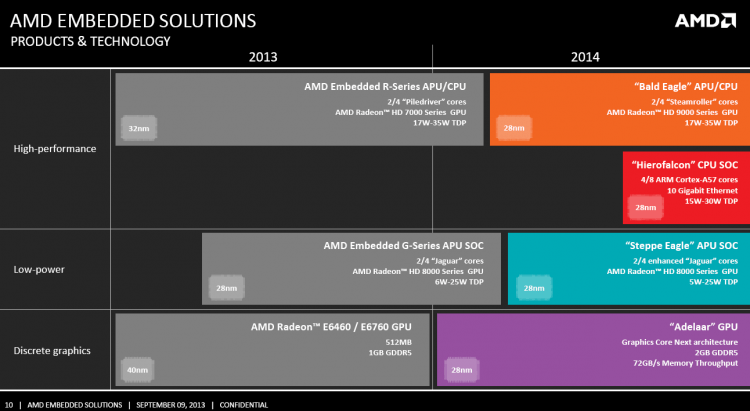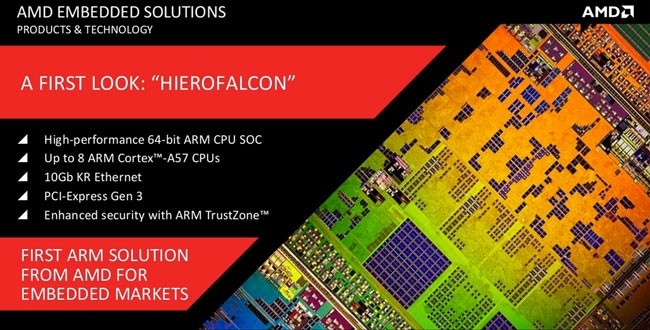AMD started building low-power server chips based on the ARM architecture earlier this year with the “Seattle” Opteron X-Series. The move marked an interesting shift for the company in its attempt to challenge Intel’s dominance of the steadily growing data center market -- but it isn’t stopping there. As hinted at a few months ago, the company is now expanding the use of ARM designs to the embedded market.
AMD’s 2014 roadmap points to a mix of ARM and x86 technologies. There’s the Hierofalcon system on a chip family based on the Cortex-A57 architecture; Bald Eagle APU and CPU chips based on AMD's Steamroller x86 core architecture; a Steppe Eagle SoC based on the current Jaguar x86 core; and a discrete GPU codenamed Adelaar for embedded applications based on the Graphics Core Next architecture.

As you can see from the slide above Hierofalcon is the only all-new line for AMD. Details are scarce at the moment but Arun Iyengar, AMD’s general manager for the embedded solutions group, did confirm that the series is targeted towards the communications, networking, and storage elements of a data centre.
Aside from either four or eight ARM Cortex-A57 cores, the 28nm Hierofalcon will include 10-gigabit Ethernet and third-generation PCIe, as well as thermal design point (TDP) of 15 to 30 watts. The chips share a lot of lineage with “Seattle” Opterons, but Iyengar wouldn’t confirm if that included AMD's Freedom fabric interconnects.

With personal computer sales on the decline and AMD struggling to keep up with Intel, the company has been increasing its emphasis on other markets. In fact, AMD expects 50% of its revenue will be from markets other than PCs and traditional servers “a few years from now.” That includes the low-power dense server market, embedded and new form factors within the client space such as tablets.
Iyengar is confident in achieving that goal and says AMD chips are widely used in airplanes' heads-up displays as well as in medical imaging equipment and factory robots. They’ll also be found inside Microsoft's upcoming Xbox One and Sony's next-generation PlayStation game consoles, both set to launch later this year.